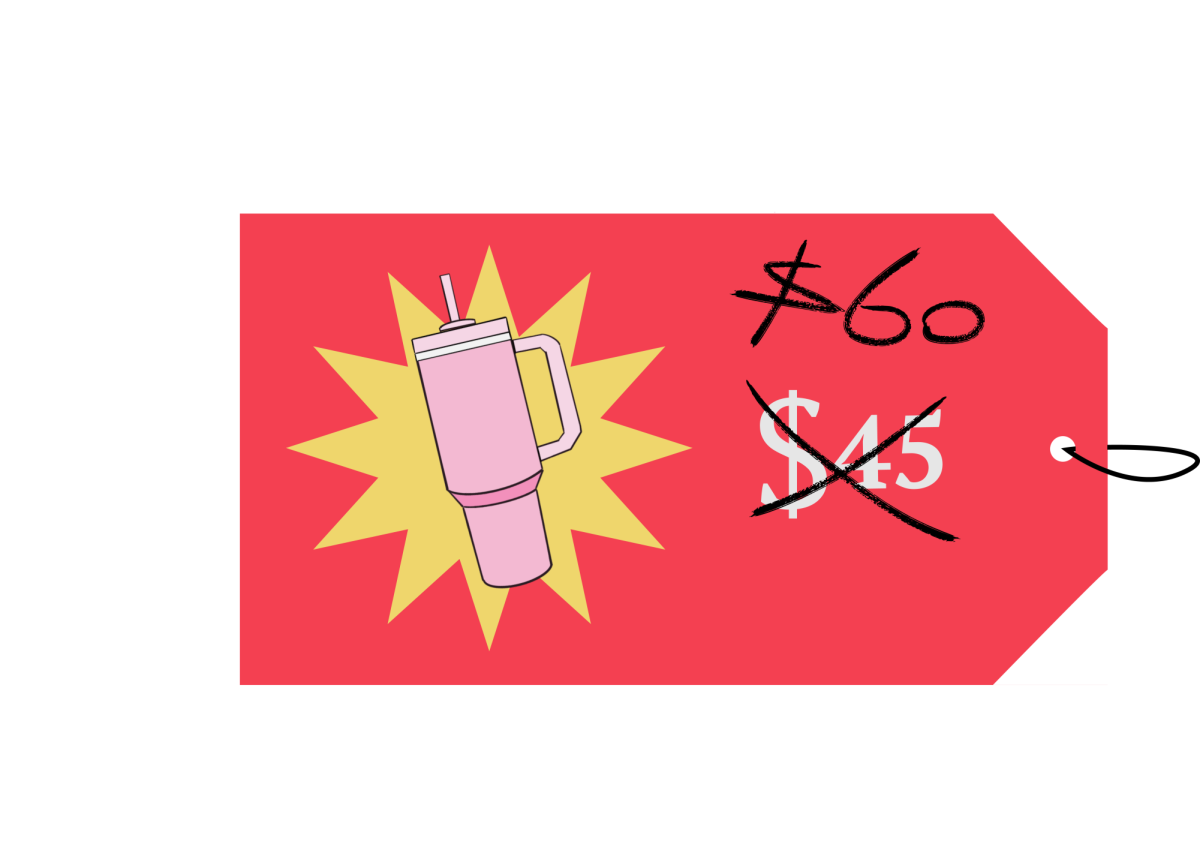In bustling high school hallways, amidst lively footsteps and eager chatter, the sound of clanking Stanley cups has taken root. Transcending its utilitarian origins to a symbol of status, identity and community, this durable and stylish water bottle has sparked craze among students.
The Stanley cup, not to be confused with the coveted hockey trophy of the same name, has become a pillar of both status and controversy, stirring a debate that reaches far beyond the realm of mere hydration.
“It carries so much social value,” Quan Xie, assistant professor at the SMU Temerlin Advertising Institute, said. “A week ago I had my students go through and interview kids with Stanley cups on campus, and so many of them said that they got one because everyone in their social circle had one.”
The concept of a trendy water bottle is nothing new. Hydro Flasks, for example, were massively popular in the years leading up to COVID-19, and for similar reasons to Stanleys. They were very effective at keeping drinks cold, were bright and colorful, and could sustain quite the bruising.
“I actually got a Hydro Flask back when they were popular, and I don’t really regret the purchase,” senior Dominick Goga said. “Besides it being the bougie little metal water bottle, I liked the color and it was also genuinely good at keeping your drinks cold.”
Given this previous saturation of the high-quality water bottle market, one would expect Stanley to have developed some sort of revolutionary new technology to gain so much traction. But they didn’t — Stanleys’ claim to fame, their big difference maker, their trump card, is their size and the inclusion of the humble handle.
“Honestly, I knew a lot of people had them, but that wasn’t really a big factor for me,” senior cross country runner Kayla Dickerson said. “For me, it was more the fact that it holds 40 ounces instead of 32. The bigger size made it so I didn’t have to go fill up my water bottle as much, and the handle made it easier to carry around than my other water bottles.”
The allure of the Stanley cups extends far beyond its physical attributes, according to Xie, as an underlying desire to belong and the pressures of social conformity have also played a large role in their catching-on.
“Usually they go for around $45, which is a lot for a water bottle.” Xie said. “But the perceived value that comes with using it increases when it comes with the feeling of acceptance by a larger group.”
Xie elaborates on the psychological effect that trends such as this one have on an underdeveloped mind.
“One big thing is the social value it carries,” Xie said. “So that’s why people are willing to spend the extra money on this water bottle.”
Despite its popularity, the Stanley cup has not been without controversy, particularly regarding the recent discovery of lead in its composition.
“It’s not a mass hysteria, but people are drumming it up online and creating hype for no reason,” Goga said.
Although this has caused widespread public alarm, the company of origin, Stanley, assures that unless tampered with or heavily damaged, it’s nearly impossible for the bottles to give consumers food poisoning.
Because of the rise and fall of water bottle trends, there is much skepticism about the longevity of Stanley’s reign.
“I think [the trend will] die soon,” Goga said. “I mean, in my lifetime, I think we’ve gone through four trends of water bottles, and I wouldn’t be surprised to see Stanley’s head on the same chopping block in about a year.”
The phenomenon raises questions about the environmental and economic sustainability of such trends, given the production and eventual disposal of such bottles.
“It’s definitely interesting how easily people can be influenced when they start seeing a trend or a craze,” Dickerson said. “It’s scary how easily we’re influenced to just hop on the bandwagon.”




